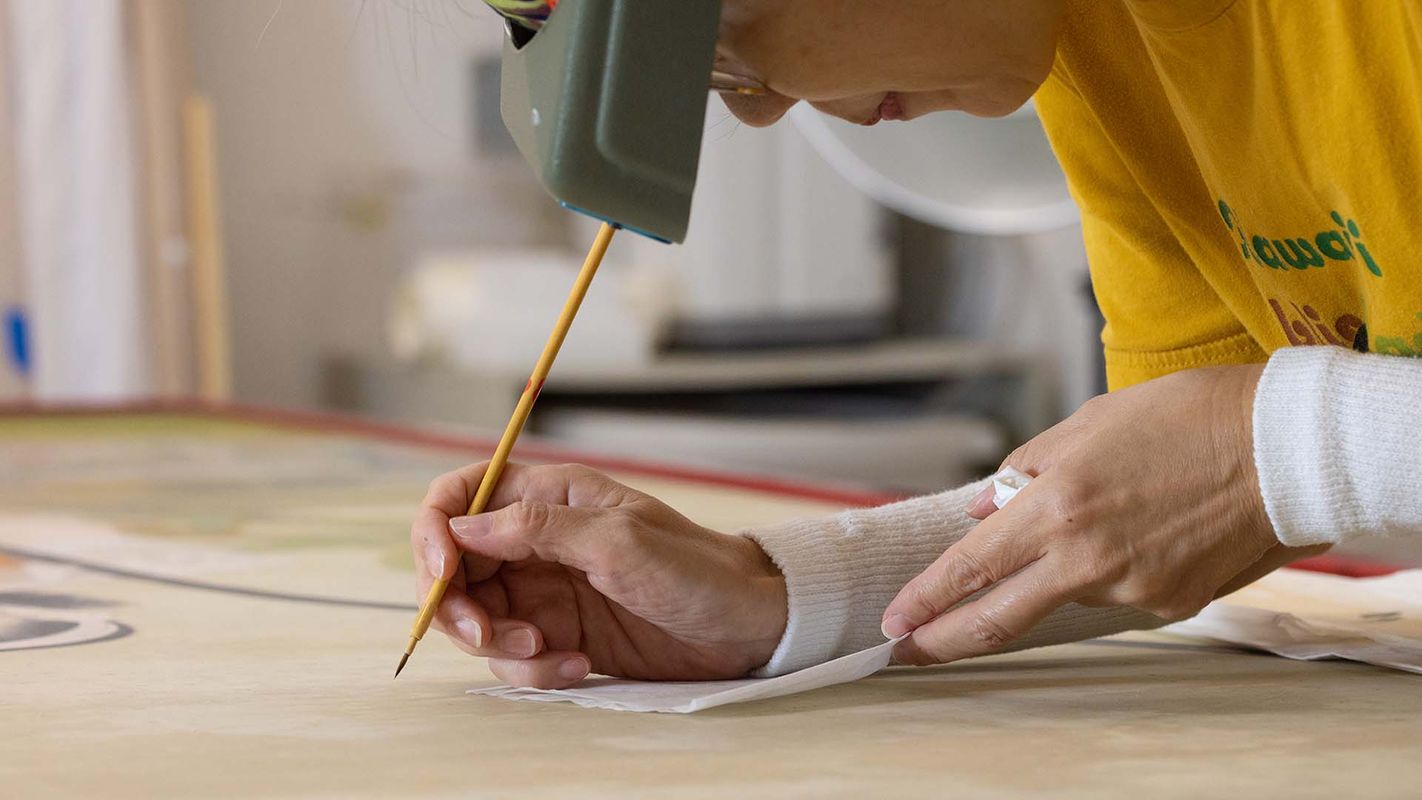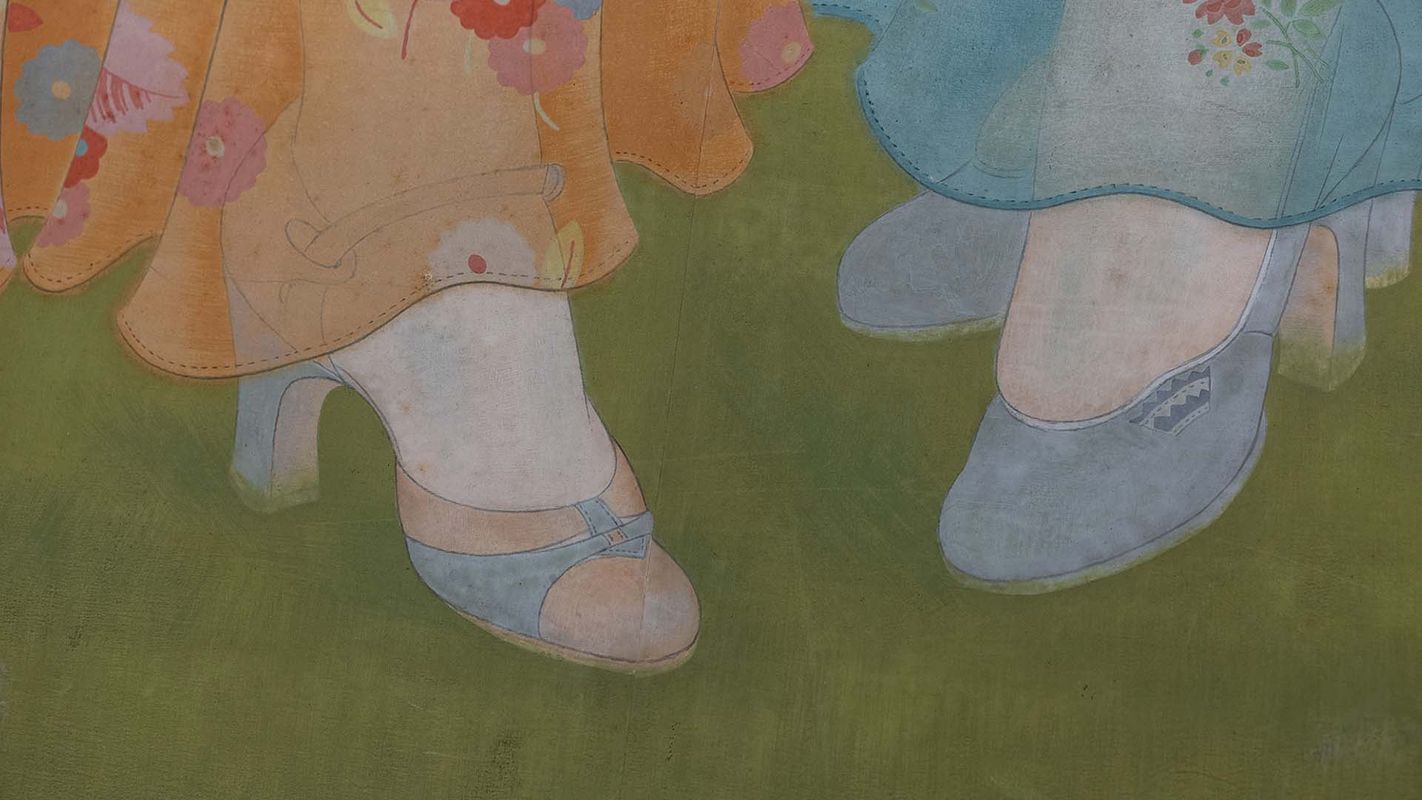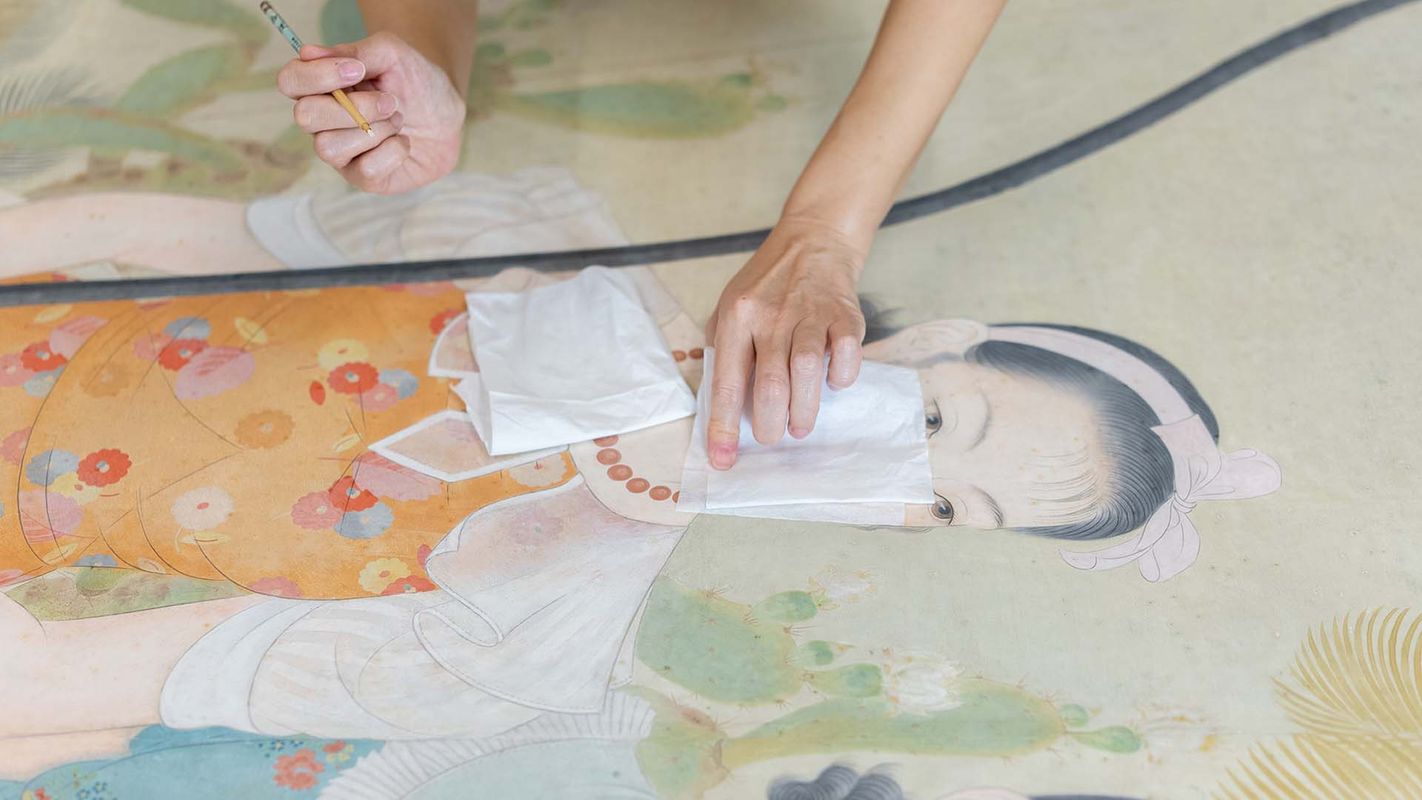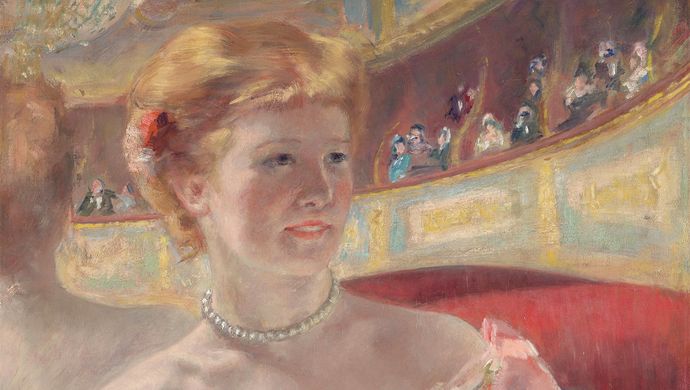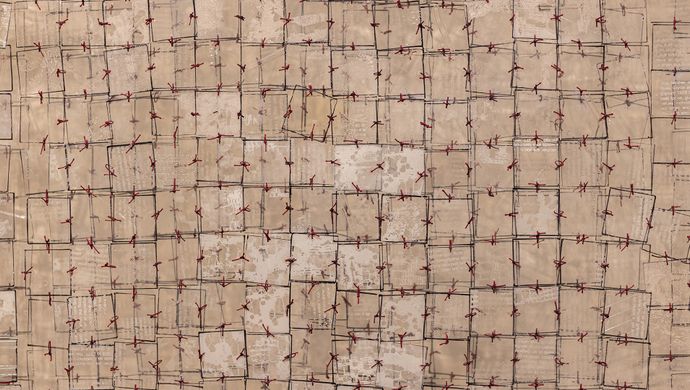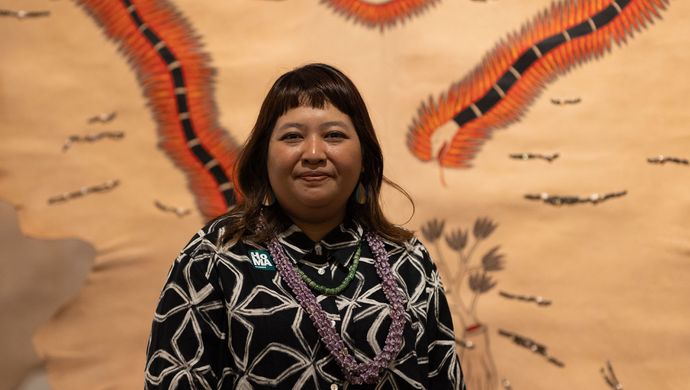 Story
Story
Conserving the modern Japanese painting Garden
Donated to the museum by Julia Meech in memory of the collector Patricia Salmon, the painting of two women, simply titled Garden, joins one of the largest collections of Nihonga art in the country, many of the works being gifts from Salmon. The painting arrived with dull gray dots populating the surface. Pace explains that the blemishes are caused by mold and estimates there are about 50 spots per 10 square inches on the painting. In a humid climate, mold can be a threat to paintings, drawings, and textiles, which is why a climate-controlled environment is essential for a museum.
In 2023, HoMA tapped Pace, who with her husband Laurence, runs Pace Art Conservation, to tackle the big job. From August to December 2024, she painstakingly treated the mold spots, thanks to funding from the Robert F. Lange Foundation.
Before even starting the assignment, however, the meticulous conservator put herself through a rigorous education on Nihonga painting. Originally from Japan, Pace previously worked at Tokyo’s famed Art Conservation Laboratory, training under Masako Koyano, the godmother of modern art conservation in Japan.
“If we don’t know how to do something, we research and learn,” says Pace. That was the case in 2011, when she and her husband learned a technique to clean HoMA’s Morris Louis painting Turning using bread they baked themselves. In February 2024, she returned to the Art Conservation Laboratory where she reconnected with Koyano and was excited to learn about new tools and techniques to treat mold on artworks, such as using a gelatin-based enzyme.
Pace explains that Nihonga painting is a tricky style to restore because the natural pigments, made from ground minerals, are difficult to match. Powdered pigments of differing fineness will yield varying intensities of color. She created a color chart illustrating the many variabilities and even made a copy of one of the women’s faces as practice.
An analysis of the mold by the Hawaii Analytical Laboratory revealed that it belongs to the genera Aspergillus and Penicillium, molds that are common on Japanese paintings according to Koyano. The painting, which was done on silk and lined with layers of paper, also underwent ultraviolet photography to pinpoint the mold, which appears fluorescent. With this information in hand, all organized in a portfolio, Pace could determine the course of treatment.
She found that the painting had previously been restored in Japan, with areas of inpainting and overpainting in the sky area and the ceramic pedestal on the right.
The cleaning process involves Pace working very gently on a small area over and over. She removes spores and gently taps the spot with pure isopropyl alcohol to kill the mold, then cleans the surface with a sponge, very carefully picking up dust. She then goes back and removes the stain left by the mold. It is delicate, labor-intensive work.
“It is a big challenge. I had to know all the materials and technique, as well as the history of the painting,” says Pace, who was wrapping up the project last month. She admits that at first she was nervous, but was soon working with confidence, and says “I feel attached to the painting.”
More about Garden by Chikatoshi Enomoto
- Painted in 1934 and included in a national exhibition at the Tokyo Metropolitan Art Museum
- In 1945 entered the collection of the Meguro Gajoen Museum of Art, now Hotel Gajoen Tokyo
- In 2003 acquired by collector Patricia Salmon
- In 2023 acquired by HoMA
Thanks to donors such as Patricia Salmon, HoMA has one of the largest collections of 20th-century Nihonga painting in the US. This recent gift is an important addition.
“The painting is a large-scale example of Chikatoshi’s work and has a prestigious provenance,” says Curator of Japanese Art Stephen Salel.
At more than eight feet tall, Garden is monumental in scale. “There’s a wonderful contrast between the delicacy of these two women and the way in which they are depicted—they are larger than life,” says Salel.
He notes that the 1930s were an interesting time in Japan. “Women were gaining more civil rights and when you look at this painting, you can see signs of what was known as the modern girl movement, or moga,” says Salel. “The women have short hair and their clothing is western in style. One of them holds a bow indicating she is an accomplished archer. These are signs that women were able to break away from some of the longstanding traditions that had confined women in Japan.”
Top banner
Enomoto Chikatoshi (1898–1973). Garden. Japan, c. 1934. Painting; ink and color on silk-paper. Gift of Julia Meech in memory of Patricia Salmon, 2022 (2022-04-01)



